The Legend of Hermes Trismegistus

In the bustling streets of ancient Alexandria, whispers of a legendary figure known as Hermes Trismegistus, or “Hermes the Thrice-Great,” echoed through the corridors of knowledge. This enigmatic character was said to have penned the foundational texts of Western alchemy, including the mysterious Hermetica. But among his most fabled works was a creation that would captivate minds for centuries to come – the Emerald Tablet.
Origins Shrouded in Mystery
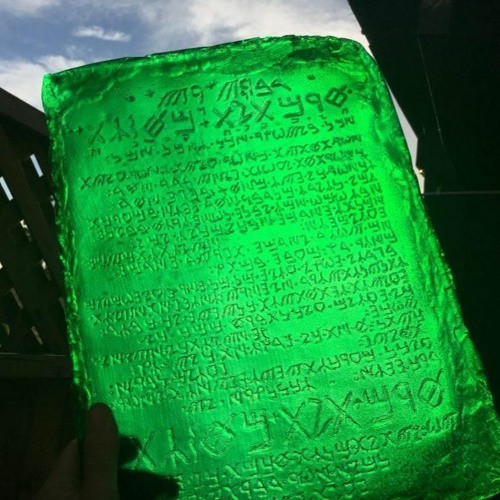
The origins of the Emerald Tablet are as elusive as the wisdom it purportedly contains. Some say it was discovered in the tomb of Hermes himself, clutched in the hands of his mummified corpse. Others claim it was a relic from the lost city of Atlantis, carrying the knowledge of an advanced civilization long forgotten. Yet another tale speaks of the Egyptian god Thoth, who divided his vast wisdom into 42 emerald plates, waiting to be recovered upon his return.
The Tablet’s Journey Through Time
From Arabic Texts to Western Scholars
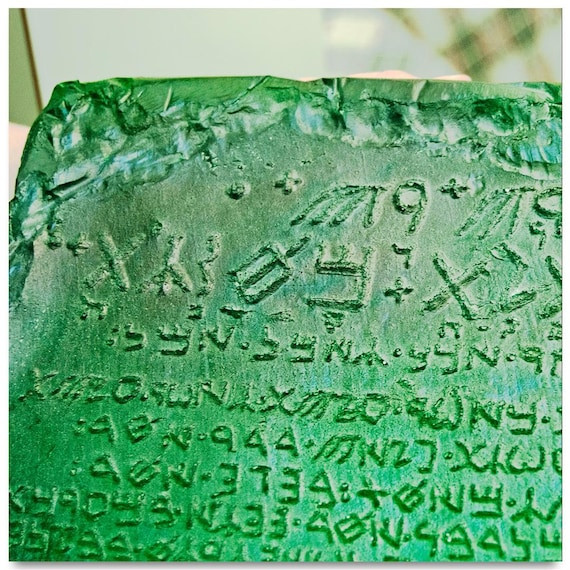
The earliest known version of the Emerald Tablet’s text emerged in an 8th-century Arabic work attributed to “Balinas.” This manuscript, known as the “Book of the Secret of Creation,” sparked a wave of interest that would ripple through the ages. As the text was translated into Latin, Greek, and Hebrew, it found its way into the hands of some of history’s greatest minds.
Alchemists and Philosophers Unlock Its Secrets
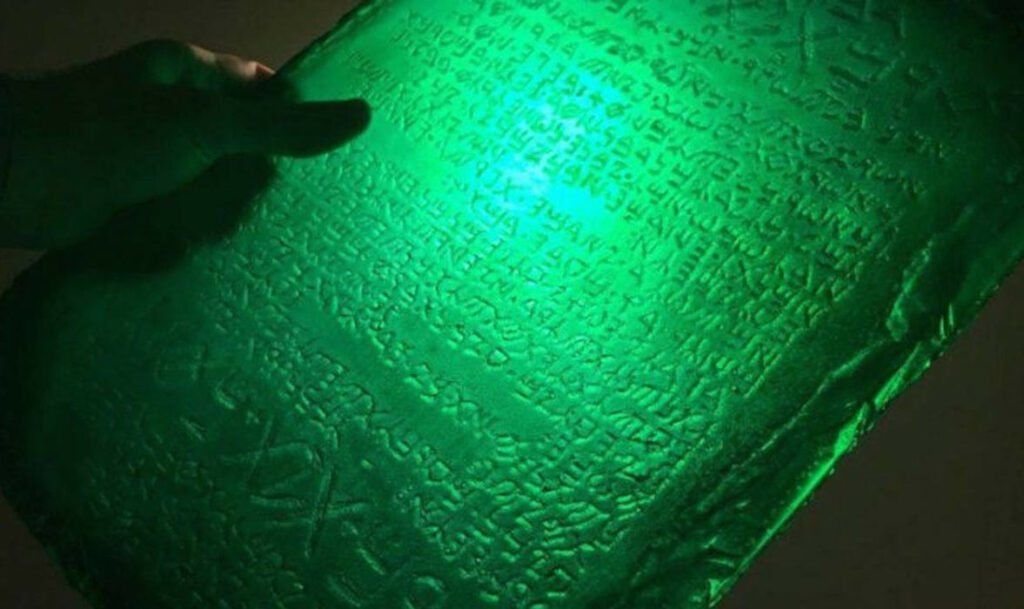
Renowned figures like Roger Bacon, Albertus Magnus, and even Isaac Newton pored over the Emerald Tablet’s cryptic verses. Each brought their own unique interpretation, seeking to unravel the universal principles hidden within its words. The tablet’s influence extended far beyond alchemy, captivating philosophers, scientists, and seekers of esoteric knowledge alike.
The Emerald Tablet’s Enduring Legacy
Seven Stages of Transformation
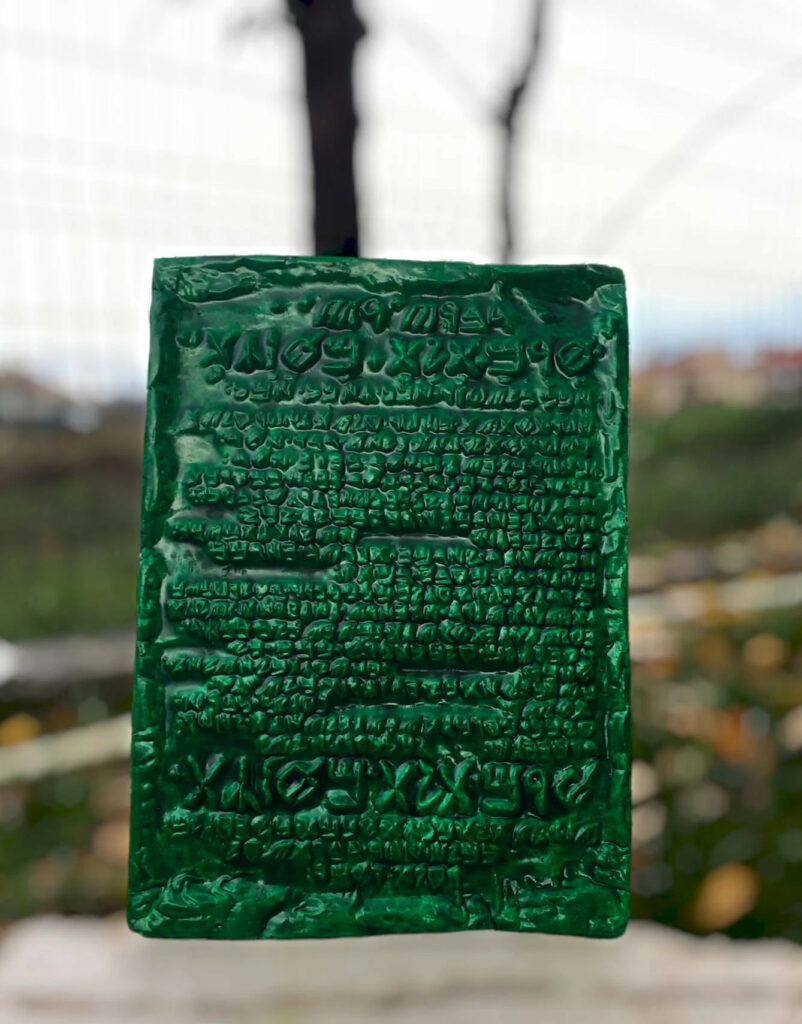
One of the most enduring interpretations of the Emerald Tablet suggests that it outlines the seven stages of alchemical transformation, known as the “Magnum Opus” or Great Work. These stages – purification, dissolution, separation, conjunction, fermentation, distillation, and coagulation – became a framework for understanding not just material transformation, but spiritual evolution as well.
A Modern Mystery

Even in our modern era, the Emerald Tablet continues to captivate imaginations. Its enigmatic nature has found its way into popular culture, sparking renewed interest in this ancient alchemical text. Yet, despite centuries of study and interpretation, the tablet’s true meaning remains elusive, inviting each new generation to embark on their own journey of discovery.
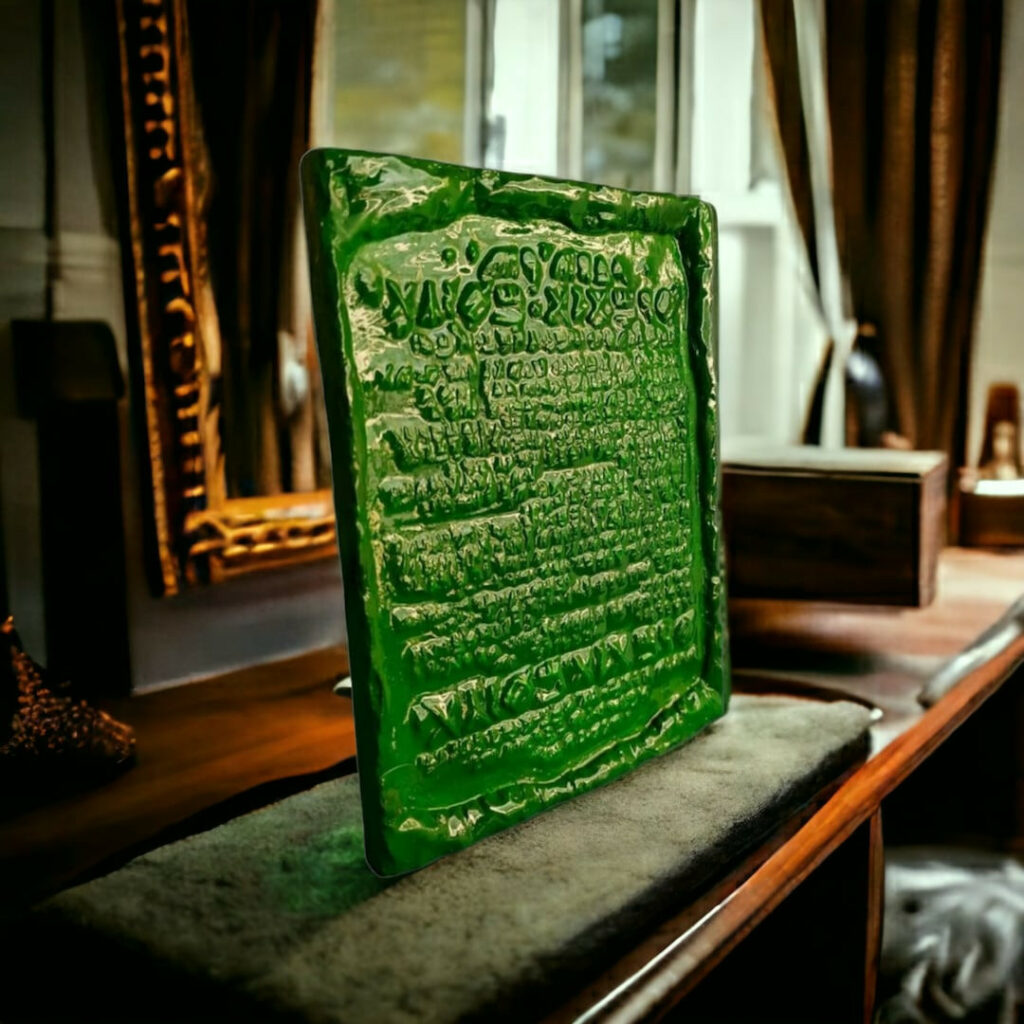
As we stand at the crossroads of ancient wisdom and modern understanding, the Emerald Tablet beckons us to look deeper, to seek the hidden truths that lie beneath the surface of our reality. In its cryptic verses, we find not just the echoes of ancient alchemists, but a timeless invitation to uncover the profound mysteries of the cosmos and ourselves.
